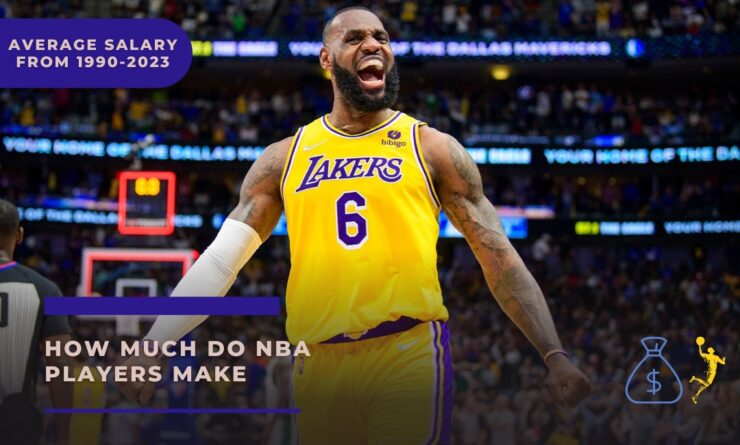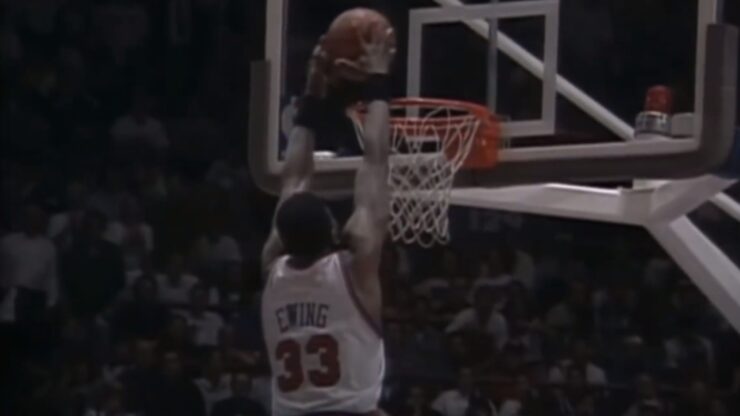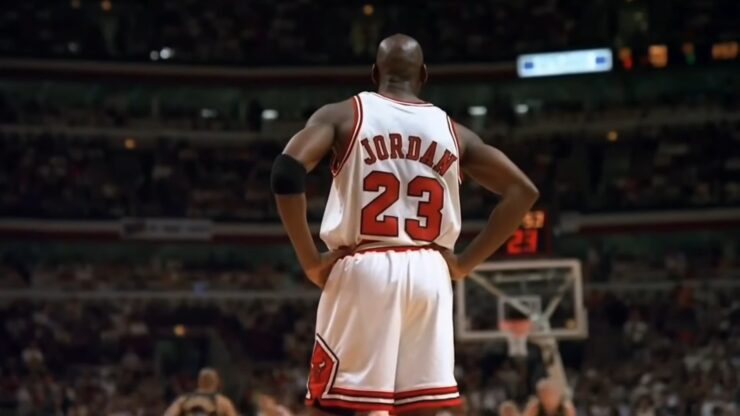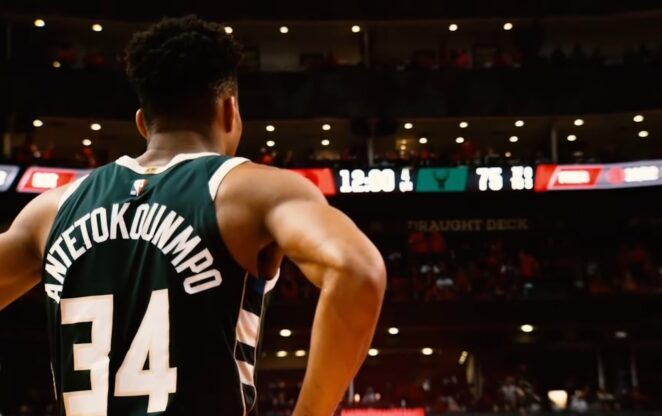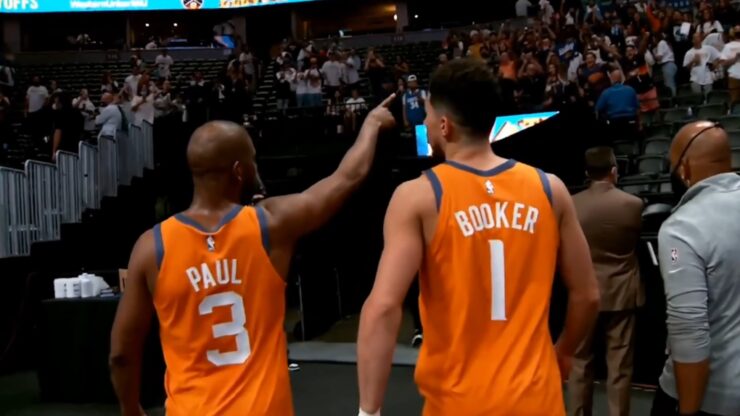The National Basketball Association (NBA) has evolved dramatically over the years, and so have the salaries of its players. From the early 1990s to the present day, the NBA has seen a meteoric rise in player earnings.
This article takes you on a journey through the evolution of NBA salaries, highlighting the key events and players that shaped the financial landscape of the league. Whether you’re a die-hard basketball fan or just curious about the economics of sports, this article offers valuable insights into the world of NBA salaries.
The Early 1990s: Setting the Stage
In the early 1990s, the NBA was still finding its footing as a major sports league. The league was dominated by legends like Michael Jordan, Magic Johnson, and Larry Bird. During this period, the average salary of an NBA player was around $1 million, which was considered substantial at the time. Magic Johnson made headlines in 1991 when he signed a contract worth $18 million over five years.
| PLAYER | 1990/91 | 1990/91(*) |
|---|---|---|
| Patrick Ewing | $4,250,000 | $9,694,547 |
| Hot Rod Williams | $3,785,000 | $8,633,850 |
| Hakeem Olajuwon | $3,175,000 | $7,242,397 |
| Charles Barkley | $2,900,000 | $6,615,103 |
| Chris Mullin | $2,850,000 | $6,501,049 |
| Isiah Thomas | $2,720,000 | $6,204,510 |
| Danny Ferry | $2,640,000 | $6,022,024 |
| Michael Jordan | $2,500,000 | $5,702,675 |
| Robert Parish | $2,500,000 | $5,702,675 |
| Moses Malone | $2,406,000 | $5,488,254 |
The NBA’s popularity was on the rise, and with it, the financial stakes. The league began to secure lucrative television deals, which played a significant role in increasing revenues. These revenues, in turn, contributed to the gradual increase in player salaries. The early 1990s set the stage for the financial boom that was to follow in the NBA.
| PLAYER | 1992/93 | 1992/93(*) |
|---|---|---|
| David Robinson | $5,720,000 | $12,089,150 |
| Michael Jordan | $4,000,000 | $8,453,951 |
| Hot Rod Williams | $3,786,000 | $8,001,665 |
| Vlade Divac | $3,633,000 | $7,678,301 |
| Robert Parish | $3,513,000 | $7,424,682 |
| Kevin McHale | $3,500,000 | $7,397,207 |
| Dominique Wilkins | $3,500,000 | $7,397,207 |
| Scottie Pippen | $3,425,000 | $7,238,695 |
| Reggie Lewis | $3,320,000 | $7,016,779 |
| Patrick Ewing | $3,300,000 | $6,974,509 |
The Mid-1990s: The Jordan Era
Michael Jordan’s influence on the NBA during the mid-1990s was unparalleled. His on-court success and marketability off the court played a significant role in popularizing the NBA globally. In 1996, Jordan signed a one-year contract worth $30.14 million with the Chicago Bulls, which was a record at the time.
| PLAYER | 1995/96 | 1995/96(*) |
|---|---|---|
| Patrick Ewing | $18,724,000 | $36,381,161 |
| Clyde Drexler | $9,810,000 | $19,061,055 |
| David Robinson | $7,700,000 | $14,961,276 |
| Chris Webber | $7,000,000 | $13,601,160 |
| Joe Dumars | $6,881,000 | $13,369,940 |
| Danny Manning | $6,833,000 | $13,276,675 |
| A.C. Green | $6,473,000 | $12,577,187 |
| Shaquille O’Neal | $5,700,000 | $11,075,230 |
| Derrick Coleman | $5,476,000 | $10,639,993 |
| Sean Elliott | $5,333,000 | $10,362,141 |
Comparatively, the average salaries in the NBA began to outpace those in other major sports leagues like the NFL and MLB. The global appeal of basketball, spearheaded by Jordan, was a major factor in this development. The mid-1990s marked a period where the NBA began to establish itself as a financial powerhouse in the world of sports.
| PLAYER | 1996/97 | 1996/97(*) |
|---|---|---|
| Michael Jordan | $30,140,000 | $56,993,066 |
| Horace Grant | $14,857,000 | $28,093,762 |
| Reggie Miller | $11,250,000 | $21,273,125 |
| Shaquille O’Neal | $10,714,000 | $20,259,579 |
| Gary Payton | $10,212,000 | $19,310,325 |
| David Robinson | $9,952,000 | $18,818,679 |
| Juwan Howard | $9,750,000 | $18,436,708 |
| Hakeem Olajuwon | $9,655,000 | $18,257,068 |
| Alonzo Mourning | $9,380,000 | $17,737,059 |
| Dennis Rodman | $9,000,000 | $17,018,500 |
The Late 1990s: Lockout and Financial Crisis
The late 1990s were marked by the 1998-99 NBA lockout, which resulted from disputes between the players and the league over salary caps and revenue sharing. The lockout shortened the season to just 50 games and had a significant impact on player salaries, with many players receiving prorated paychecks.
| PLAYER | 1998/99 | 1998/99(*) |
|---|---|---|
| Patrick Ewing | $18,500,000 | $33,630,389 |
| Shaquille O’Neal | $15,000,000 | $27,267,883 |
| David Robinson | $14,841,000 | $26,978,843 |
| Kevin Garnett | $14,000,000 | $25,450,024 |
| Alonzo Mourning | $13,130,000 | $23,868,487 |
| Juwan Howard | $13,125,000 | $23,859,398 |
| Hakeem Olajuwon | $12,943,000 | $23,528,547 |
| Derrick Coleman | $12,267,000 | $22,299,674 |
| Dikembe Mutombo | $11,218,000 | $20,392,741 |
| Scottie Pippen | $11,000,000 | $19,996,447 |
| Jayson Williams | $11,000,000 | $19,996,447 |
Despite the lockout, the NBA recovered remarkably well. The late 1990s saw the emergence of players like Kobe Bryant and Tim Duncan, who carried the league into the new millennium. The league continued to grow in popularity, and player salaries began to rebound and increase.
The Early 2000s: The New Millennium
The early 2000s saw an influx of international players like Dirk Nowitzki and Manu Ginobili, which further globalized the NBA. The league also secured massive television deals, including a $4.6 billion deal with ESPN and TNT in 2002, which had a direct impact on player salaries.
| PLAYER | 2001/02 | 2001/02(*) |
|---|---|---|
| Kevin Garnett | $22,400,000 | $37,288,575 |
| Shaquille O’Neal | $21,428,572 | $35,671,469 |
| Alonzo Mourning | $18,754,800 | $31,220,525 |
| Juwan Howard | $18,750,000 | $31,212,535 |
| Scottie Pippen | $18,083,564 | $30,103,140 |
| Karl Malone | $17,500,000 | $29,131,699 |
| Jayson Williams | $15,125,000 | $25,178,111 |
| Rasheed Wallace | $14,400,000 | $23,971,226 |
| Dikembe Mutombo | $14,315,790 | $23,831,045 |
| Gary Payton | $12,926,493 | $21,518,326 |
Key contracts during this period included Kevin Garnett’s $126 million deal in 1999 and Allen Iverson’s $71 million contract in 1999. These contracts set new benchmarks for player earnings and signaled the NBA’s financial strength.
| PLAYER | 2002/03 | 2002/03(*) |
|---|---|---|
| Kevin Garnett | $25,200,000 | $41,506,599 |
| Shaquille O’Neal | $23,571,429 | $38,824,200 |
| Alonzo Mourning | $20,629,800 | $33,979,080 |
| Juwan Howard | $20,625,000 | $33,971,174 |
| Scottie Pippen | $19,727,524 | $32,492,953 |
| Karl Malone | $19,250,000 | $31,706,429 |
| Rasheed Wallace | $16,200,000 | $26,682,813 |
| Dikembe Mutombo | $16,105,264 | $26,526,775 |
| Chris Webber | $14,343,750 | $23,625,408 |
| Allan Houston | $14,343,750 | $23,625,408 |
The Mid-2000s: The Age of Superstars
The mid-2000s were defined by the rise of LeBron James and other superstars like Dwyane Wade and Carmelo Anthony. The impact of these superstars on average salaries was significant, as they became the faces of the league and commanded massive contracts.
| PLAYER | 2004/05 | 2004/05(*) |
|---|---|---|
| Shaquille O’Neal | $27,696,430 | $43,261,765 |
| Dikembe Mutombo | $19,485,719 | $30,436,651 |
| Chris Webber | $17,531,250 | $27,383,775 |
| Allan Houston | $17,531,250 | $27,383,775 |
| Kevin Garnett | $16,000,000 | $24,991,966 |
| Jermaine O’Neal | $14,796,000 | $23,111,320 |
| Jason Kidd | $14,796,000 | $23,111,320 |
| Shareef Abdur-Rahim | $14,625,000 | $22,844,219 |
| Allen Iverson | $14,625,000 | $22,844,219 |
| Ray Allen | $14,625,000 | $22,844,219 |
In 2005, the NBA introduced the luxury tax aimed at ensuring competitive balance within the league. This tax penalized teams that exceeded a certain payroll threshold, but it also indirectly contributed to the rise in player salaries as teams were willing to pay the tax to secure top talent.
| PLAYER | 2005/06 | 2005/06(*) |
|---|---|---|
| Shaquille O’Neal | $20,000,000 | $30,468,997 |
| Chris Webber | $19,125,000 | $29,135,978 |
| Allan Houston | $19,125,000 | $29,135,978 |
| Michael Finley | $18,612,500 | $28,355,210 |
| Kevin Garnett | $18,000,000 | $27,422,097 |
| Allen Iverson | $16,453,125 | $25,065,511 |
| Stephon Marbury | $16,453,125 | $25,065,511 |
| Jermaine O’Neal | $16,440,000 | $25,045,515 |
| Jason Kidd | $16,440,000 | $25,045,515 |
| Brian Grant | $16,006,220 | $24,384,673 |
| Kobe Bryant | $15,946,875 | $24,294,264 |
| Tim Duncan | $15,845,156 | $24,139,300 |
The Late 2000s: Economic Recession and its Effects
The 2008 economic recession had a profound impact on the NBA. Teams became more cautious with their spending, and some players took pay cuts to help their teams financially. The average salary, however, continued to grow, albeit at a slower pace.
| PLAYER | 2009/10 | 2009/10(*) |
|---|---|---|
| Tracy McGrady | $23,239,562 | $31,925,643 |
| Kobe Bryant | $23,034,375 | $31,643,765 |
| Jermaine O’Neal | $23,016,000 | $31,618,522 |
| Tim Duncan | $22,183,220 | $30,474,480 |
| Shaquille O’Neal | $20,000,000 | $27,475,254 |
| Dirk Nowitzki | $19,795,714 | $27,194,613 |
| Paul Pierce | $19,795,712 | $27,194,610 |
| Rashard Lewis | $18,876,000 | $25,931,144 |
| Ray Allen | $18,776,860 | $25,794,950 |
| Michael Redd | $17,040,000 | $23,408,916 |
In 2011, another lockout occurred due to disagreements between the players and owners regarding the division of basketball-related income. The lockout resulted in a shortened season but also led to a new collective bargaining agreement that addressed salary issues and set the stage for future growth.
The Early 2010s: The Social Media Boom
The early 2010s saw the rise of social media platforms, and the NBA was quick to embrace this new medium. Players like Stephen Curry and Kevin Durant became social media sensations, and this popularity translated into increased revenue for the league through sponsorships and advertising.
| PLAYER | 2011/12 | 2011/12(*) |
|---|---|---|
| Kobe Bryant | $25,244,493 | $33,139,086 |
| Vince Carter | $21,300,000 | $27,961,050 |
| Kevin Garnett | $21,247,044 | $27,891,534 |
| Tim Duncan | $21,164,619 | $27,783,332 |
| Rashard Lewis | $21,136,631 | $27,746,592 |
| Gilbert Arenas | $19,269,307 | $25,295,308 |
| Dirk Nowitzki | $19,092,873 | $25,063,699 |
| Pau Gasol | $18,714,150 | $24,566,539 |
| Carmelo Anthony | $18,518,574 | $24,309,802 |
| Amare Stoudemire | $18,217,705 | $23,914,843 |
In 2016, the NBA experienced a salary cap spike due to a new television deal worth approximately $24 billion. This led to unprecedented contracts, with players like Mike Conley signing a then-record $153 million deal over five years.
| PLAYER | 2014/15 | 2014/15(*) |
|---|---|---|
| Kobe Bryant | $23,500,000 | $29,215,494 |
| Joe Johnson | $23,180,790 | $28,818,648 |
| Carmelo Anthony | $22,458,401 | $27,920,565 |
| Amare Stoudemire | $21,896,658 | $27,222,199 |
| Dwight Howard | $21,436,271 | $26,649,840 |
| Chris Bosh | $20,644,400 | $25,665,376 |
| LeBron James | $20,644,400 | $25,665,376 |
| Chris Paul | $20,068,563 | $24,949,488 |
| Kevin Durant | $19,997,513 | $24,861,158 |
| Deron Williams | $19,754,465 | $24,558,998 |
The Late 2010s to Early 2020s: The Modern NBA
The late 2010s and early 2020s have been characterized by the evolution of player roles and positions, with an emphasis on versatility and shooting. Players like Giannis Antetokounmpo and Luka Dončić have secured record-breaking contracts, with Giannis signing a supermax extension worth $228 million over five years in 2020.
| PLAYER | 2018/19 | 2018/19(*) |
|---|---|---|
| Stephen Curry | $37,457,154 | $44,045,441 |
| Russell Westbrook | $35,665,000 | $41,938,067 |
| LeBron James | $35,654,150 | $41,925,309 |
| Chris Paul | $35,654,150 | $41,925,309 |
| Kyle Lowry | $32,700,000 | $38,451,558 |
| Blake Griffin | $31,873,932 | $37,480,194 |
| Gordon Hayward | $31,214,295 | $36,704,534 |
| James Harden | $30,570,000 | $35,946,915 |
| Paul George | $30,560,700 | $35,935,979 |
| Mike Conley | $30,521,115 | $35,889,432 |
However, the COVID-19 pandemic also had a significant impact on the NBA’s finances. The league had to adapt to new realities, including playing games without fans and in a bubble environment. Despite these challenges, the NBA has shown resilience, and player salaries continue to be on an upward trajectory.
| PLAYER | 2020/21 | 2020/21(*) |
|---|---|---|
| Stephen Curry | $43,006,362 | $49,431,367 |
| Russell Westbrook | $41,358,814 | $47,537,680 |
| Chris Paul | $41,358,814 | $47,537,680 |
| John Wall | $41,254,920 | $47,418,265 |
| James Harden | $41,254,920 | $47,418,265 |
| Kevin Durant | $40,108,950 | $46,101,091 |
| LeBron James | $39,219,566 | $45,078,836 |
| Paul George | $35,450,412 | $40,746,583 |
| Klay Thompson | $35,361,360 | $40,644,227 |
| Mike Conley | $34,502,132 | $39,656,633 |
The Current Scenario: 2024
As of the 2022-23 season, the average salary of an NBA player is approximately $6.62 million, with the salary cap being $123,655,000. The highest-paid player is Stephen Curry of the Golden State Warriors, earning $48,070,014 for the season. The median salary stands at $2,000,000. Devin Booker of the Phoenix Suns holds the largest guarantee at $290,467,200.
| PLAYER | 2022/23 |
|---|---|
| Stephen Curry | $48,070,014 |
| John Wall | $47,345,760 |
| Russell Westbrook | $47,080,179 |
| LeBron James | $44,474,988 |
| Kevin Durant | $44,119,845 |
| Bradley Beal | $43,279,250 |
| Paul George | $42,492,492 |
| Kawhi Leonard | $42,492,492 |
| Giannis Antetokounmpo | $42,492,492 |
| Damian Lillard | $42,492,492 |
In 2024, the NBA is a global phenomenon. The league is more diverse than ever, with players from all over the world. The style of play has evolved, with a greater emphasis on three-point shooting and pace.
The Landscape of the NBA
In 2024, the NBA is a global phenomenon. The league is more diverse than ever, with players from all over the world. The style of play has evolved, with a greater emphasis on three-point shooting and pace.
The Highest Earners
Apart from Stephen Curry, players like Russell Westbrook and LeBron James are among the highest earners in the league. Their salaries are a combination of their playing contracts and various endorsements.
The Role of Endorsements and Personal Brands
Endorsements and personal brands play a significant role in the earnings of NBA players in 2024. Players like LeBron James and Kevin Durant have built business empires that extend beyond basketball, including production companies and investment portfolios.
Factors Contributing to Salary Growth
Television Contracts
The NBA’s TV contracts have brought in billions of dollars. For instance, in 2014, the NBA signed a nine-year, $24 billion TV deal with ESPN and Turner Sports. This influx of money has had a direct impact on player salaries, as a significant portion of it is allocated to them.
Globalization of the NBA
The NBA has become a global brand, with games being broadcast in over 200 countries. This international expansion has opened up new revenue streams through merchandise sales, international TV deals, and exhibition games.
Collective Bargaining Agreement (CBA)
The CBA, which is an agreement between the NBA and the players’ Association, has played a crucial role in ensuring that players receive a fair share of the revenues. For example, the CBA ensures that players receive between 49-51% of the league’s total basketball-related income.
The Future: Beyond 2024
Looking ahead, the NBA is likely to continue its upward trajectory. With the ongoing globalization of the sport, the introduction of new technologies, and the ever-increasing popularity of basketball, player salaries are expected to continue to rise.
Technological Innovations
Emerging technologies like virtual reality and blockchain could open up new revenue streams for the NBA. For instance, the NBA could sell virtual tickets for fans to watch games in VR, creating an immersive experience.
The Next Generation
As the next generation of players like Zion Williamson and Luka Dončić take center stage, they will likely command even larger salaries and endorsement deals, continuing the trend of increasing player earnings.
Closing Thoughts
The journey of NBA player salaries from 1990 to 2024 is a testament to the league’s growth and success. From the era of Michael Jordan to the current stars like Stephen Curry, the NBA has evolved into a global powerhouse.
With the continued global expansion of the NBA, technological innovations, and the evolution of the game, player salaries will continue to rise in the future. This reflects not just the popularity of the sport but also the value that these incredible athletes bring to the game and to fans around the world.

